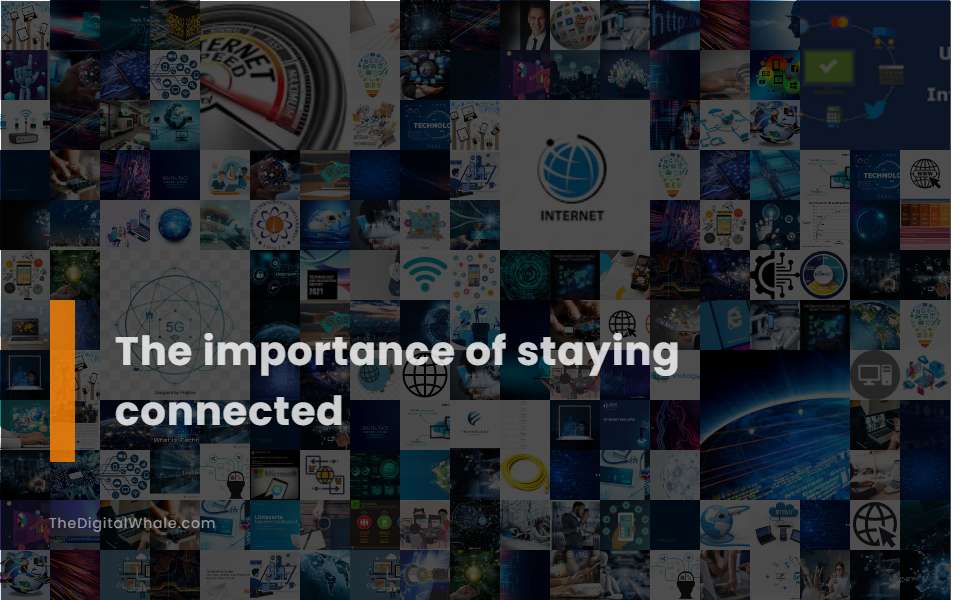The Importance of Staying Connected
What role does social media play in addiction recovery? What is the importance of being connected? Let's find out more about The Importance of Staying Connected.

Staying connected creates feelings of belonging and being loved, cared for, and valued.
Staying connected to others creates feelings of belonging and being loved, cared for, and valued, which is crucial for both mental and physical health. This connection helps protect against serious illness and disease while promoting a longer, healthier life. For more detailed information, you can visit the CDC's Social Connectedness page.
Social connections are crucial for mental and physical health.
Social connections are essential for both mental and physical health, as they reduce the risk of depression, enhance resilience, boost self-esteem, and even increase longevity by providing emotional support, a sense of belonging, and a safety net during challenging times. Strong social bonds also improve mood, reduce stress, prevent chronic diseases, slow cognitive decline, and promote healthier lifestyle choices. For more insights, you can read about these benefits in detail on the Static E-Health website, which elaborates on the importance of these connections in promoting overall well-being.
Strong social bonds help protect against chronic diseases like heart disease, stroke, and dementia.
Strong social bonds are crucial for protecting against chronic diseases such as heart disease, stroke, and dementia, as they reduce the risk of these illnesses and contribute to longer, healthier lives by providing emotional support, managing stress, and promoting healthy behaviors. Discover more about the importance of Social Connectedness on the CDC website.
Social connection reduces the risk of depression and anxiety.
Social connectedness is associated with lower risks of depression and anxiety, as it reduces feelings of loneliness and enhances mental health outcomes, independent of demographics, socioeconomic status, and prior health conditions. A recent paper published on the Harvard website highlights the critical role that social ties play in fostering resilience against mental health challenges. This study underscores the importance of nurturing relationships as a means to mitigate the adverse effects of isolation and improve overall well-being.
It improves stress management, healthy eating habits, and physical activity.
Staying connected is crucial for stress management, as it involves building and maintaining relationships with family, friends, and even casual acquaintances. These connections can provide emotional support, improve mental health, and encourage healthy habits such as physical activity and social interactions that reduce stress. For more detailed information on managing stress through connection, visit the American Heart Association website.
Related:
What is a time-tracking software and how can it be used to manage time? Can technology help me manage my time more effectively? Let's find out more about How To Manage Time with Technology.
Social connections enhance quality of sleep and overall well-being.
Social connections and engagement in activities such as group hobbies, community events, and spending time in nature can significantly enhance sleep quality and overall well-being by reducing feelings of loneliness, improving mental and physical health, and providing a sense of belonging and support. To learn more about the impact of social engagement on sleep, you can visit UCLA Health for further details and insights.
Community connections in places like neighborhoods, schools, and workplaces reduce social isolation and loneliness.
Community connections in neighborhoods, schools, and workplaces are essential for alleviating social isolation and loneliness. These settings offer platforms for social interaction, fostering a sense of belonging and enhancing both mental and physical well-being through mutual support and shared activities. Particularly, schools play a vital role in nurturing community ties, enhancing health outcomes, and bolstering a sense of belonging for students and educators by prioritizing social-emotional learning and fostering positive relationships. As highlighted by Renewed Light MH, effective strategies such as developing plans for school connectedness, integrating social connection into health curricula, and creating supportive environments can significantly reduce feelings of loneliness and isolation, especially among youth, in both schools and neighborhoods.
Engaging in social activities boosts confidence and keeps the mind active.
Engaging in social activities can significantly boost confidence and keep the mind active, improving overall wellbeing and reducing the risk of loneliness and its negative impacts on physical and mental health. For more detailed advice, explore ways of Staying Connected, which can provide tips to enhance your social connections and maintain a healthy, connected lifestyle.
Social ties lower the risk of depression, improve blood pressure, and maintain a healthy body mass index.
Strong social ties are associated with a lower risk of depression, improved blood pressure, and a healthy body mass index. These connections also contribute to better mental and physical wellbeing, including a stronger immune system, reduced stress, and a lower risk of heart-related diseases and other long-term health issues. For more detailed information on this topic, you can visit the Better Health Channel, which provides valuable insights into the significance of strong relationships for maintaining optimal health.
Having a support network is critical for emotional health and provides a sense of purpose and self-worth.
Having a robust social support network is crucial for emotional health, providing emotional support, a sense of belonging, and contributing to feelings of happiness and fulfillment, which are essential for Mental Wellness and overall life satisfaction.
Related:
What are the benefits of using technology in the workplace? What are some implications of technology on the workplace? Let's find out more about Tech Advances and Their Implications In the Workforce.
